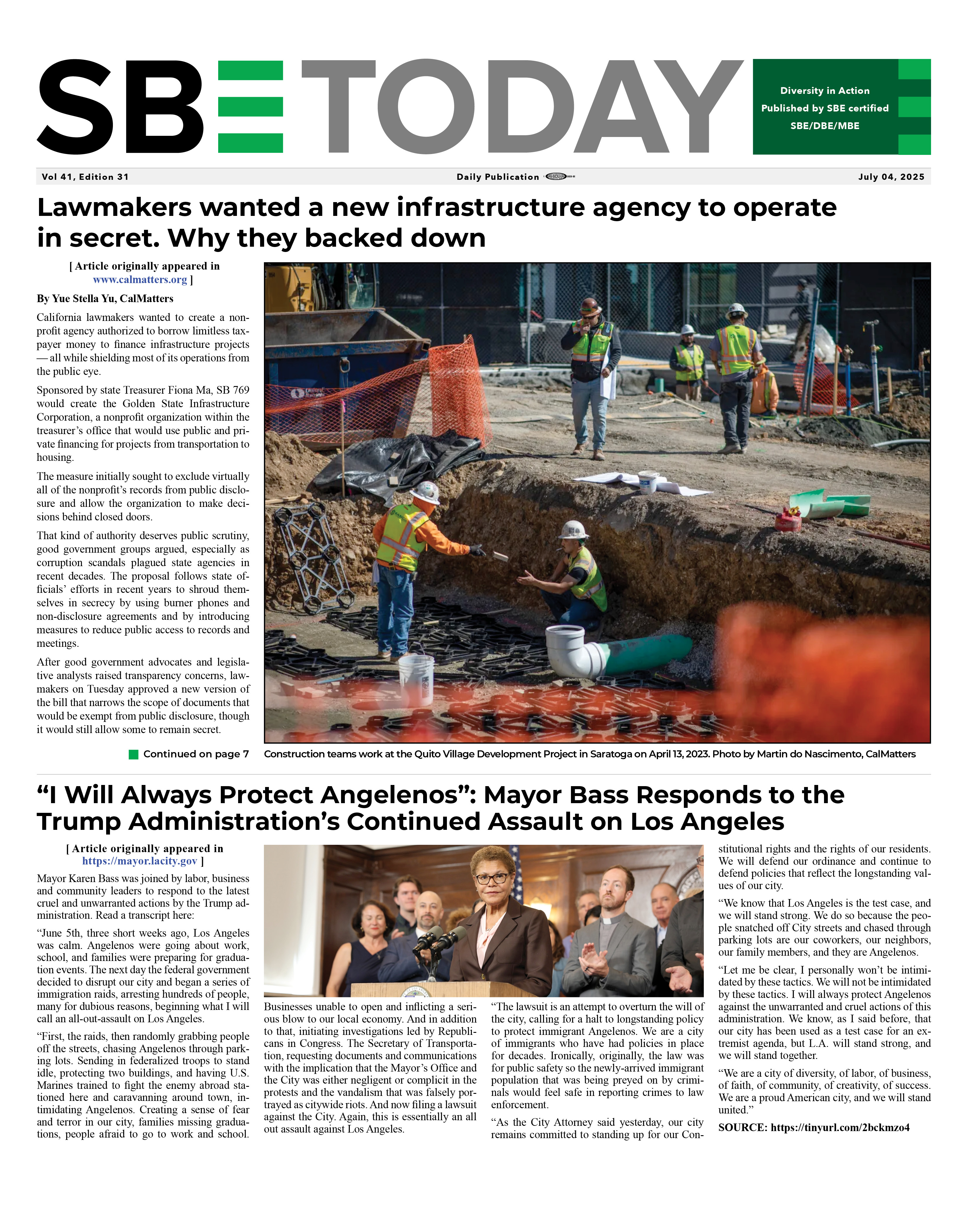|
|
California’s Labor Day lament: A shortage of workers
09/08/2021
[ Article was originally posted on www.calmatters.org ]
An acquaintance had some good news to impart last week: Her son, who operates construction machinery, just got a raise from $43 an hour to $57. That sounded outlandishly high — the equivalent of well over $100,000 a year — but the most recent “prevailing wage” schedule for Northern California public works projects confirms that $50-plus per hour is commonplace. And that doesn’t include more than $30 per hour in fringe benefits. It explains why government construction is costly in California, but also undermines the popular belief that one must have a college degree to get a well-paying job. As well as marking the unofficial end of summer and the beginning of autumn, Labor Day honors the men and women who do the real physical work that society needs to function. They operate machinery, fix our cars and appliances, build our houses, cultivate and deliver our food and do hundreds of other vital tasks. As I’m writing this column, I’m waiting for a plumber to clear a plugged-up drainage pipe, the kindred soul of the electrician who repaired a faulty circuit a couple of weeks ago. It’s what happens when you live in a nearly 70-year-old home. Oddly, although California has the nation’s highest poverty rate and one of its highest unemployment rates, employers have hundreds of thousands of jobs going unfilled – from teachers, carpenters and auto mechanics to farm workers and even hamburger flippers. It’s not uncommon for fast food chains to offer $15 per hour, but still not get enough applicants. The worker shortages indicate that the pandemic may have wrought at least a semi-permanent change in California’s employment scene, and if it persists, it will have a negative impact on the state’s economy. In decades past, when California has experienced labor shortages, we could count on an inflow of workers from other states and nations to fill the gaps. But foreign migration has slowed to a trickle and California loses more people to other states than it gains. The Public Policy Institute of California has studied those trends and found that those lacking college educations are most likely to leave the state while those with higher education degrees are more likely to come here from other states. The exchange may help industries demanding higher education levels and paying high salaries, such as Silicon Valley, but it bodes ill for filling blue collar jobs and even professional positions that are not especially lucrative, such as teaching. Ironically, California’s high housing costs drive away the very people we need to build more housing. The situation implies that California must do better in generating skilled workers within itself, rather than relying on migration, and there are some hopeful indications of that attitudinal change. A recent announcement by Chaffey College, a community college in Fontana, is one such indication. It has received a $2.9 million state grant to build a new welding training facility that will double the number of trainees. Welders are much in demand and earn premium wages. Last week, the Legislature passed a bill to promote blue-collar trades among high school students. “We must ensure that trade apprenticeships are presented as an option,” the author of the bill, Assemblymember James Ramos, a Highland Democrat, said. “These programs expand workforce opportunities for young people and create a pipeline of skilled employees receiving competitive wages.” The Chaffey grant and Assembly Bill 643 are refreshing signs that the college-for-all mentality is finally giving way to the reality that we need to train more Californians to do our vital work. SOURCE: https://calmatters.org/commentary/2021/09/california-worker-shortage/ Back To News |
|





